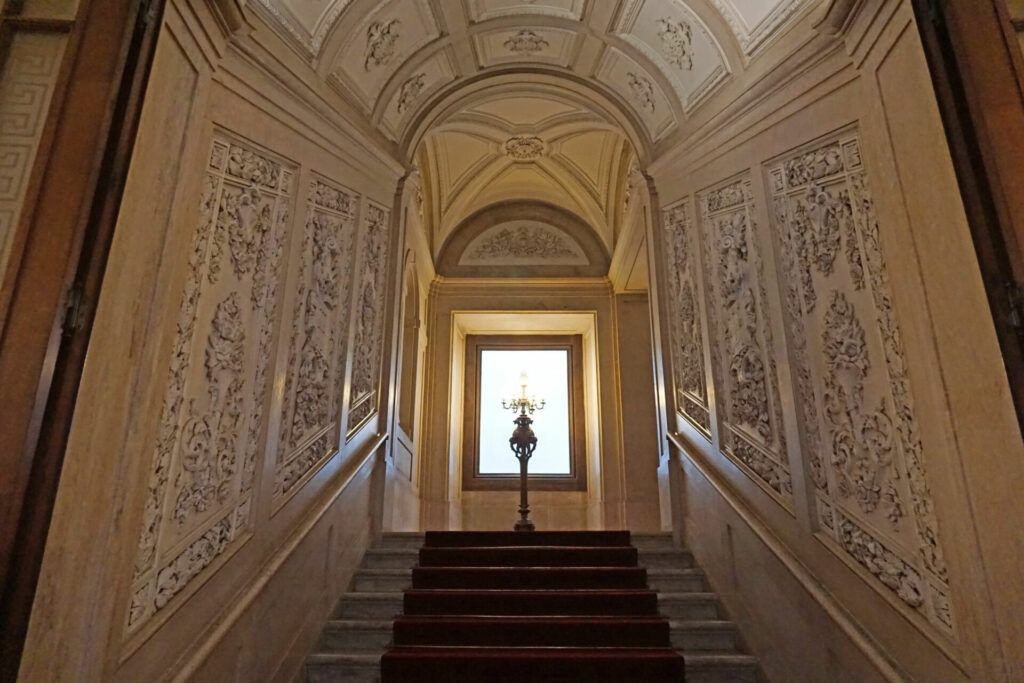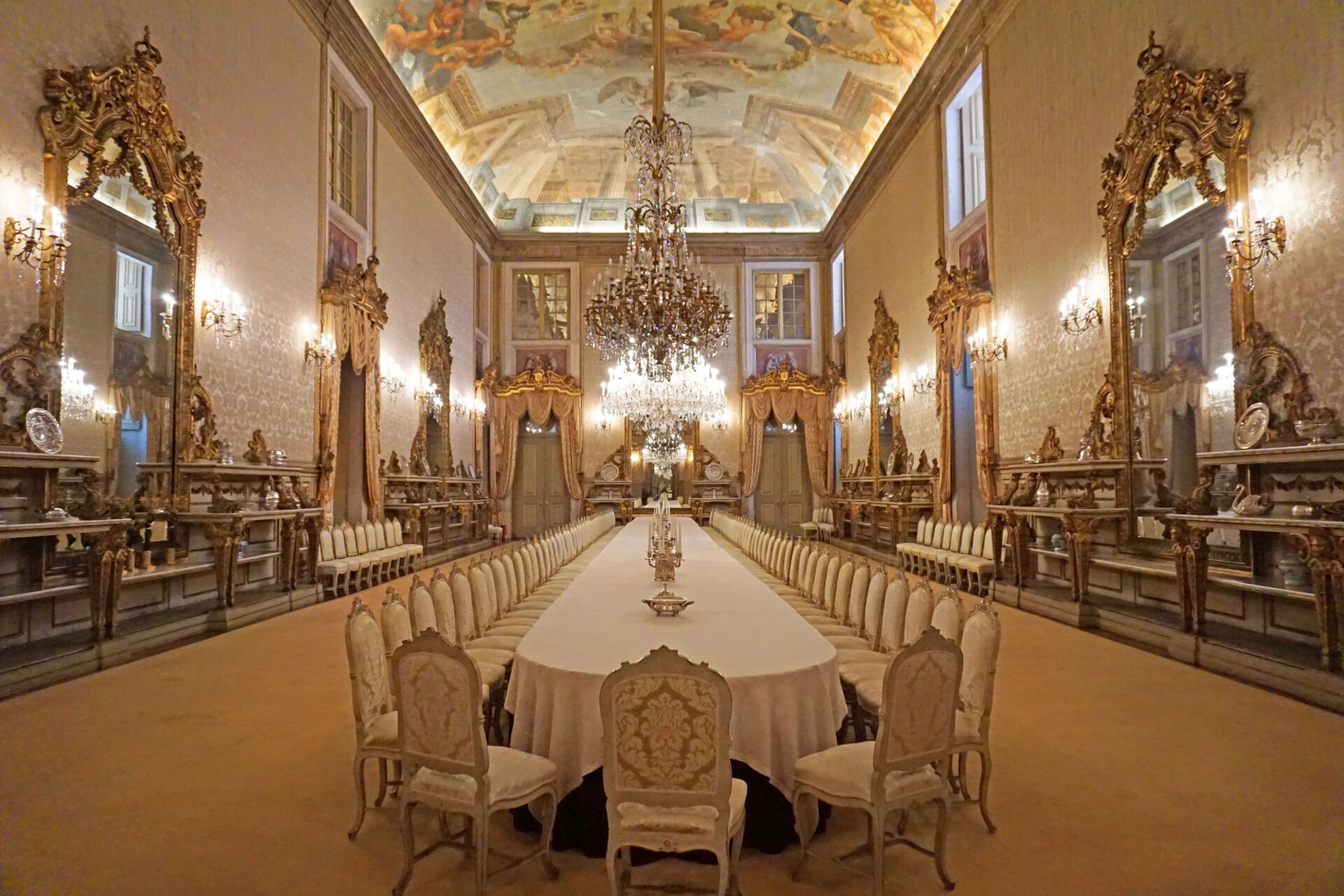Visitors to Lisbon are almost obligated to go to gorgeous Belém as part of their trip: it has museums, UNESCO World Heritage sites, gardens, incredible views of the river, and – of course – the world-famous Pastéis de Belém. But overlooking all that is the Palácio Nacional da Ajuda. Once upon a time the home of the Portuguese royal family, this majestic palace harbors a secret that you wouldn’t guess… and it will completely blow your mind!
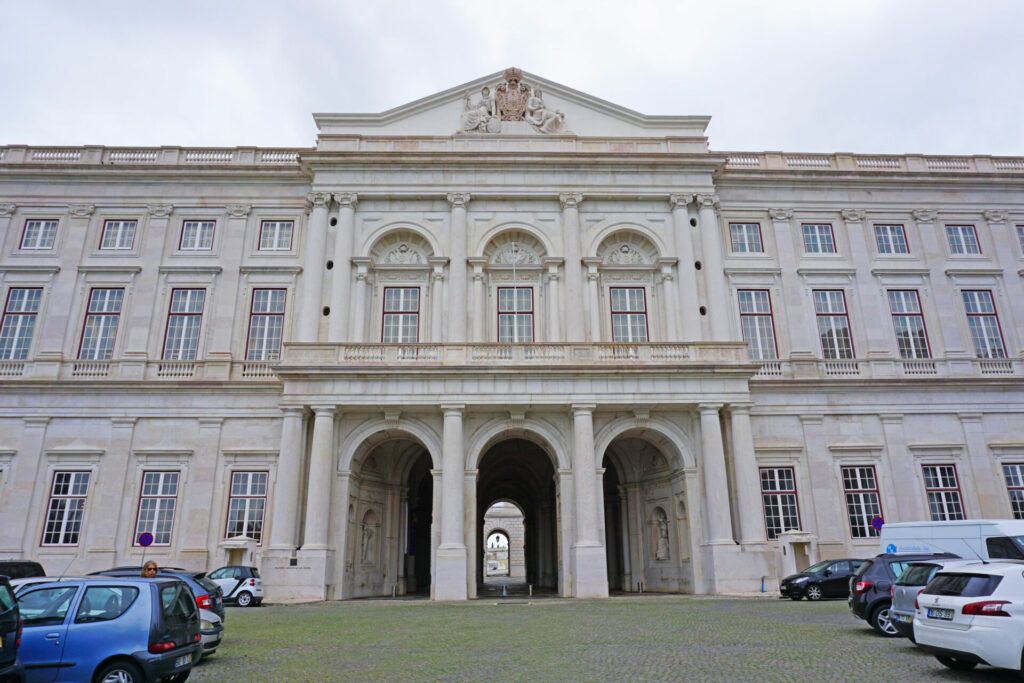
The history behind the construction of this palace is an expensive series of trial and error… and utterly fascinating. In 1755, a massive earthquake destroyed most of Lisbon, including the royal palace. The royal family survived, but the king (D. José I) decided that the new palace should be built on a hill in the Ajuda district of Lisbon and built out of wood, to better resist future earthquakes. It became known as the Paço de Madeira (wooden palace) or Real Barraca (royal stall). This – at least in context – made perfect sense. But in 1794 (wouldn’t you know it?) the palace and the vast majority of its priceless contents were destroyed in a fire. Whereas the stone material of the previous palace was deadly in an earthquake, the wood of the “new” palace, made it highly susceptible to fire.
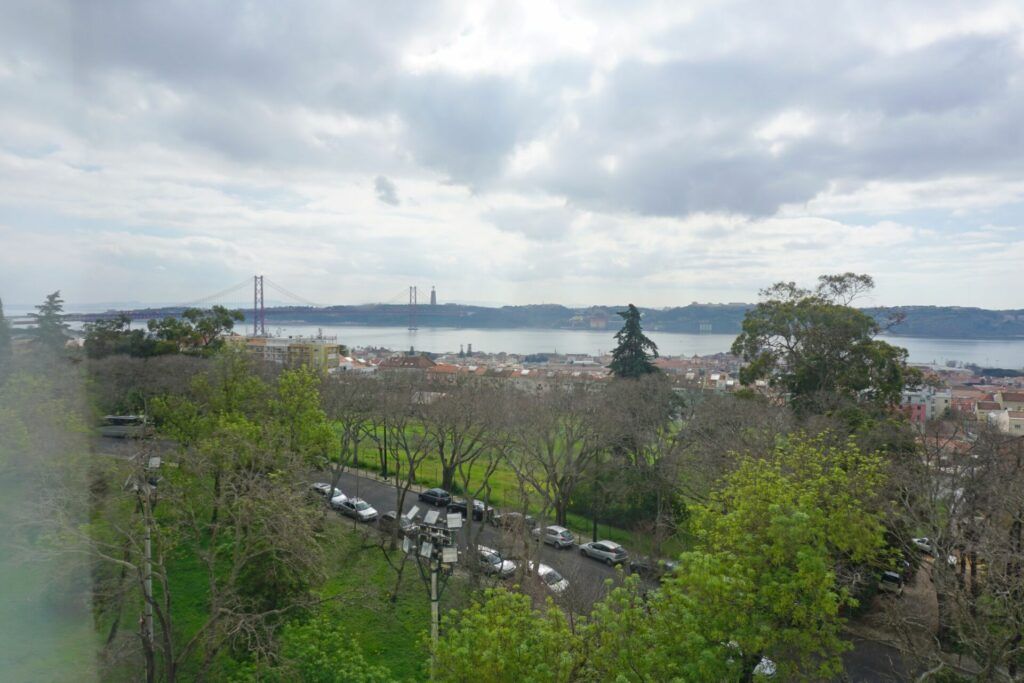
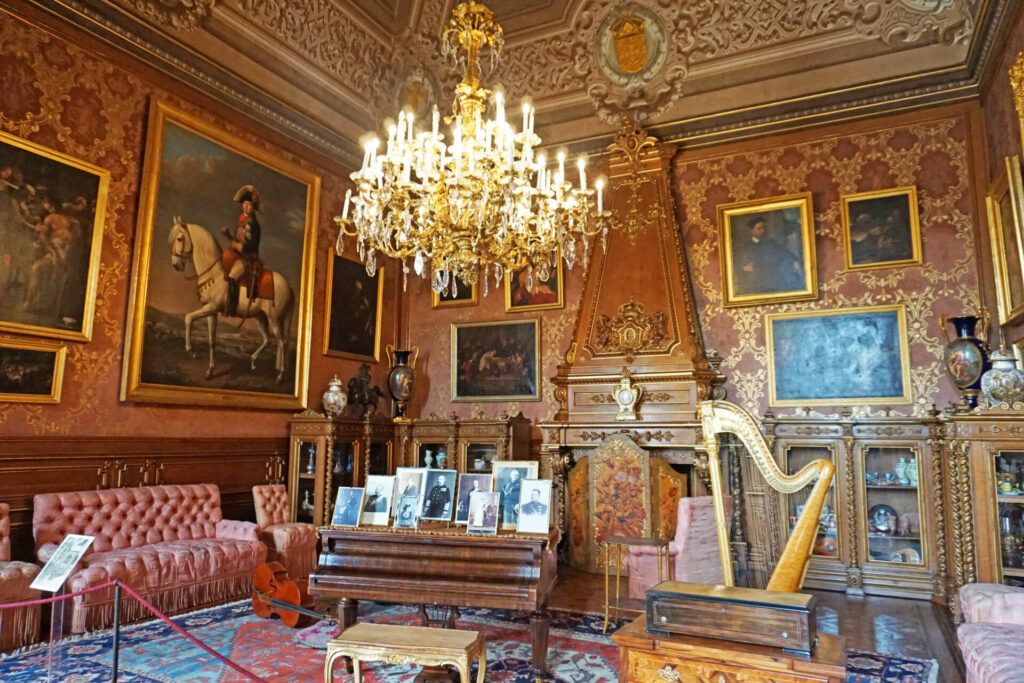
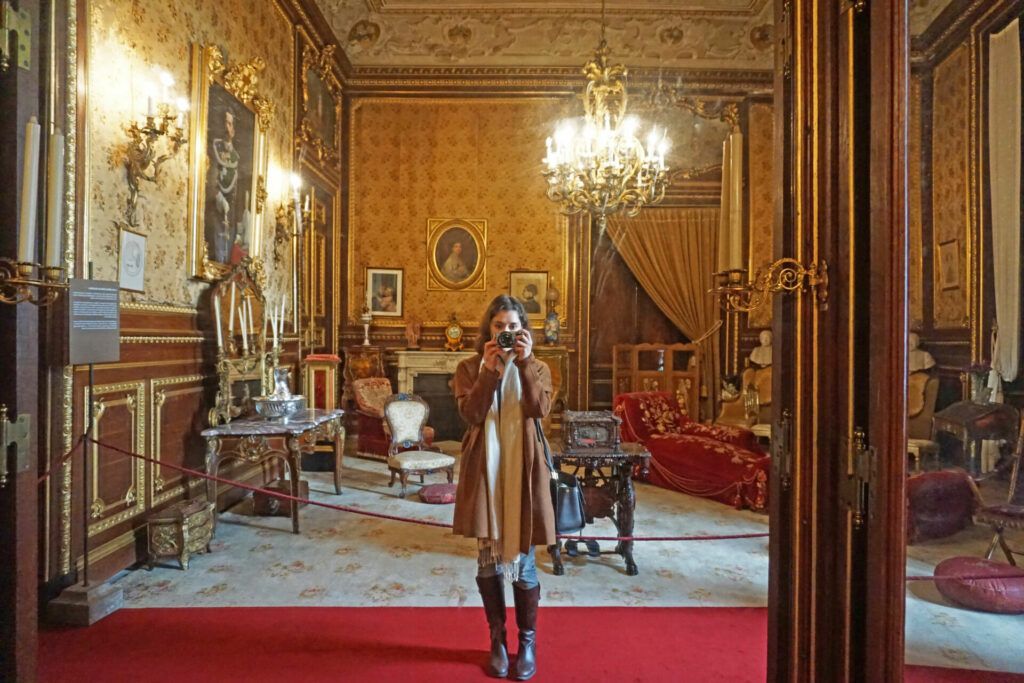
Construction on the next palace began in 1796 – this time, out of stone (fool me once…?). In 1807, the royal family fled the Napoleonic Wars by moving to Brazil, which was still a Portuguese colony at the time. They left the Palácio Nacional da Ajuda to the best artists and sculptors of the time to work on it in their absence. But guess what happened when they returned to Lisbon in 1821? They found the palace still unfinished, although a little progress had been made. During this time, they only used the palace for ceremonies, not as their actual residence. Only five years later, did D. Isabel Maria and two of her sisters move in.
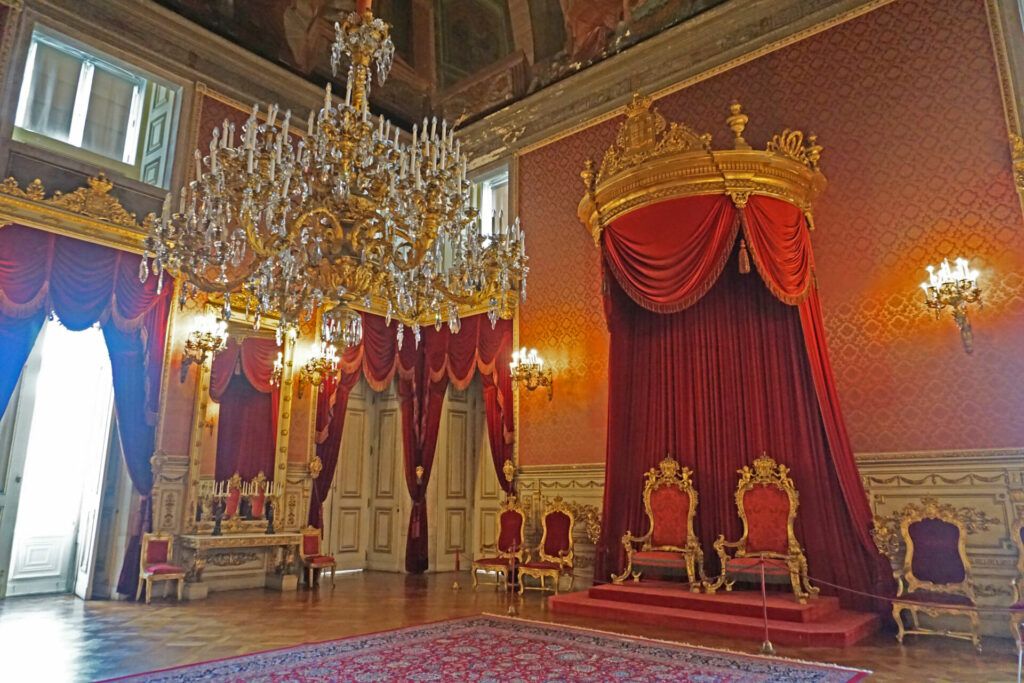
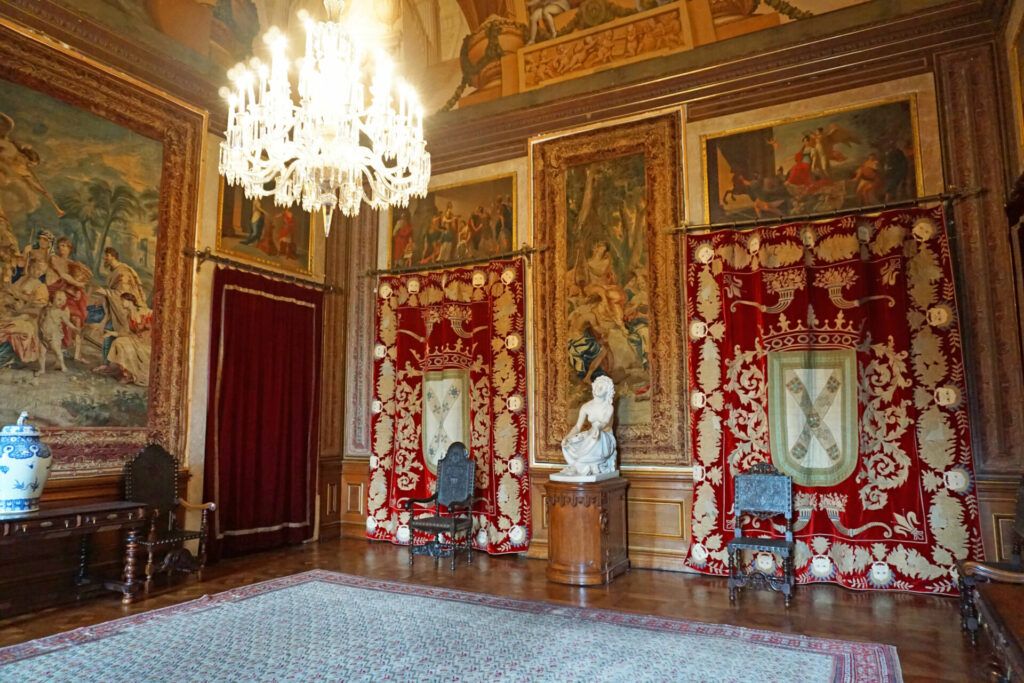
In 1833, amidst political turmoil, building stopped altogether. I know what you’re thinking: when does this poor palace get built? Please bear with me.
It was only in 1861 that construction works began again – this time with great vigor. The insides received a make-over in 1862, the year the Portuguese king Luís I married the Italian Maria Pia, Princess of Savoy. Fun fact: each room has a different pattern on its wooden floors. With so many beautiful choices, it’s hard to choose your favorite pattern, but it’s certainly worth trying. The palace also benefited from indoor plumbing with both hot and cold water. Soon, the palace was not only the place where the royal family lived and passed their time, it was also the location of diplomatic banquets and galas. Two princes were born here.
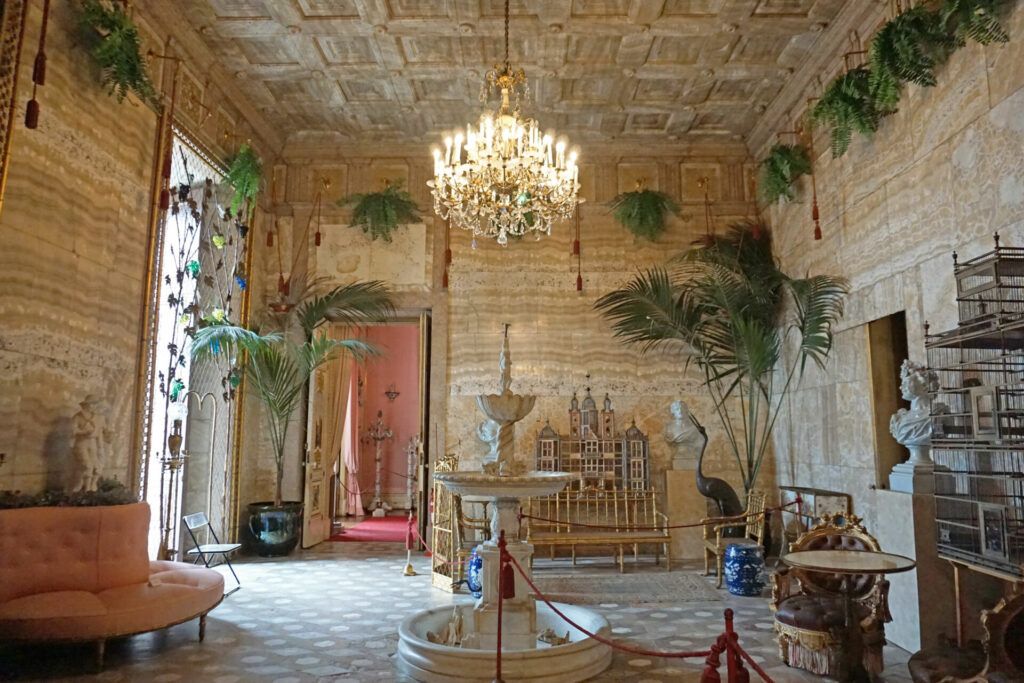
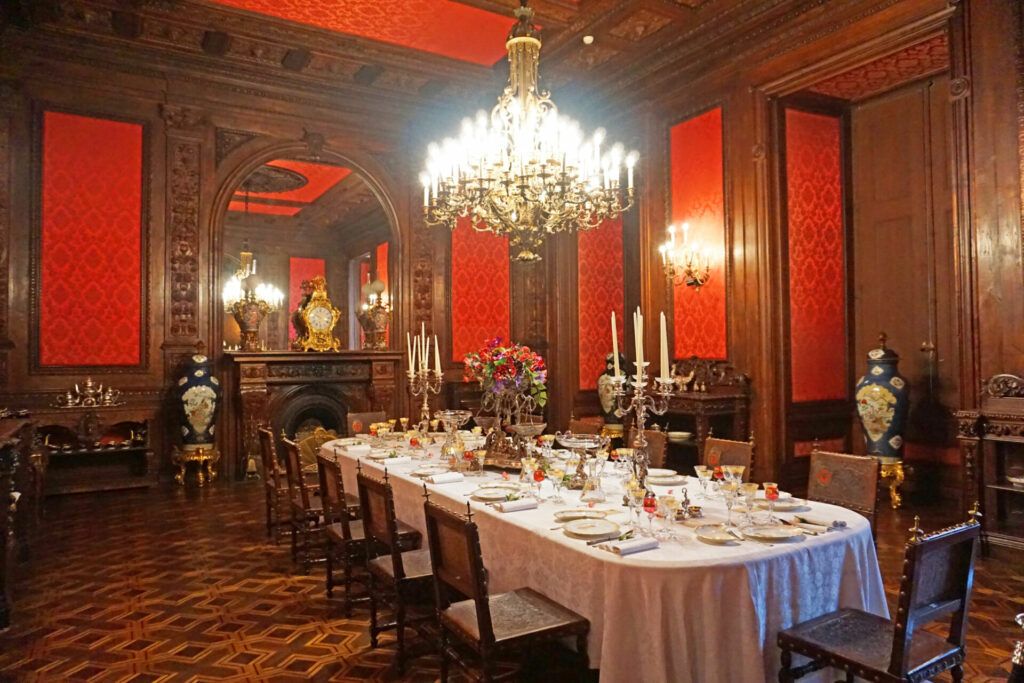
Walking around it today you’ll see a music room, dining rooms, an office, a games room and even an indoor garden room, which once housed exotic birds and plants. All this is evidence of the royal family’s daily life and what events and activities took place at the palace. Maria Pia was a very gifted artist and I was able to see her sketches and drawings at an exhibit at the Palácio Nacional da Ajuda. But I digress, because even though the palace was inhabited, it still wasn’t actually completed!
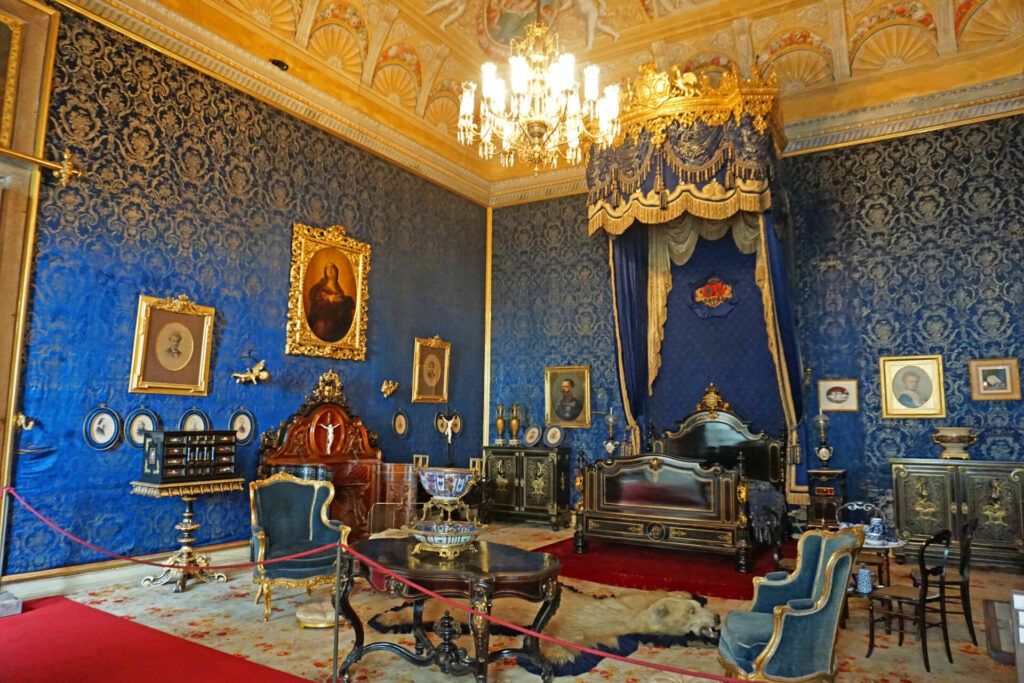
With D. Luís I’s death in 1889, the royal family became somewhat divided. The continuing building of the palace was no longer a priority. In 1910, with the overthrow of the Portuguese monarchy and the declaration of the Portuguese Republic, the palace was shut completely. For several decades it was closed to the public. In 1996, they started restoring some of the rooms to their original glory. When you visit it today, you’ll find yourself in rooms with stunning chandeliers, painted ceilings, intricately-carved pieces of furniture, historical portraits, ornate doors, priceless sculptures and luxurious tapestries. I highly recommend a visit to this luxurious palace! The large State Dining Room alone is worth a visit – it’s absolutely stunning.
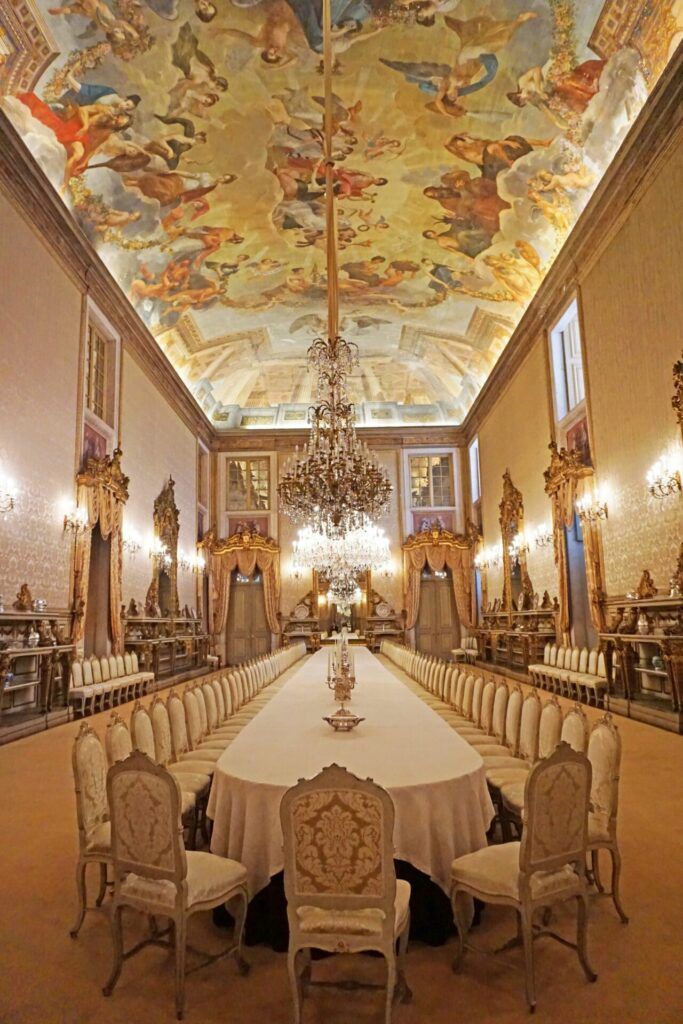
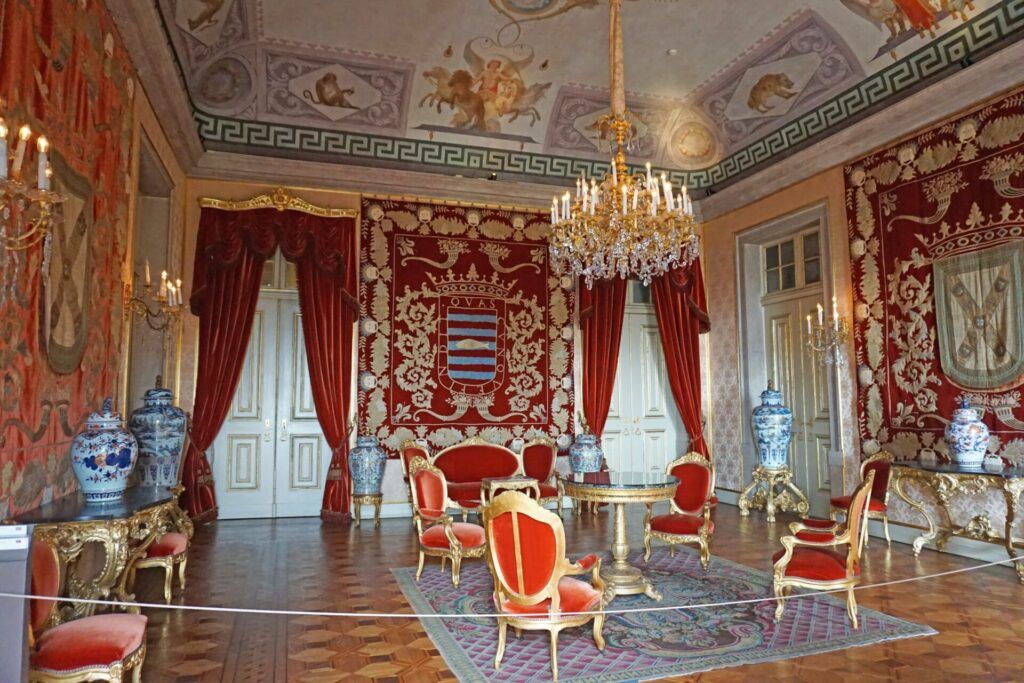
Alright, but what about the mind-blowing fact I promised? The entire story about the construction wasn’t without a purpose. You may have deduced by now that the palace was never actually completed. But what you didn’t realize, was that the palace that exists today is only a mere third of the size of the original plan for the palace. In fact, the entrance used today was designed as a side entrance. The intended main entrance was supposed to face the river so that anybody arriving to Lisbon by ship would see an enormous palace with a massive entrance at the top of the Ajuda hill. If you visit the Palácio Nacional da Ajuda today, you’ll be impressed with its size – but stunned when you realize that this was only a fraction of the intended size. Such a project would have completely changed the cityscape of Lisbon.
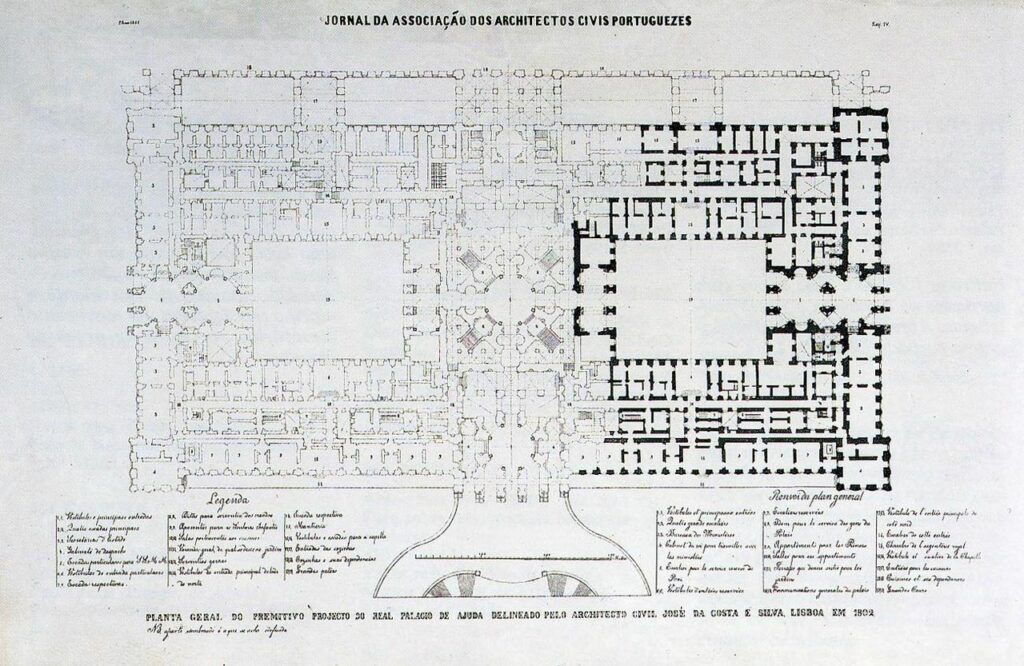
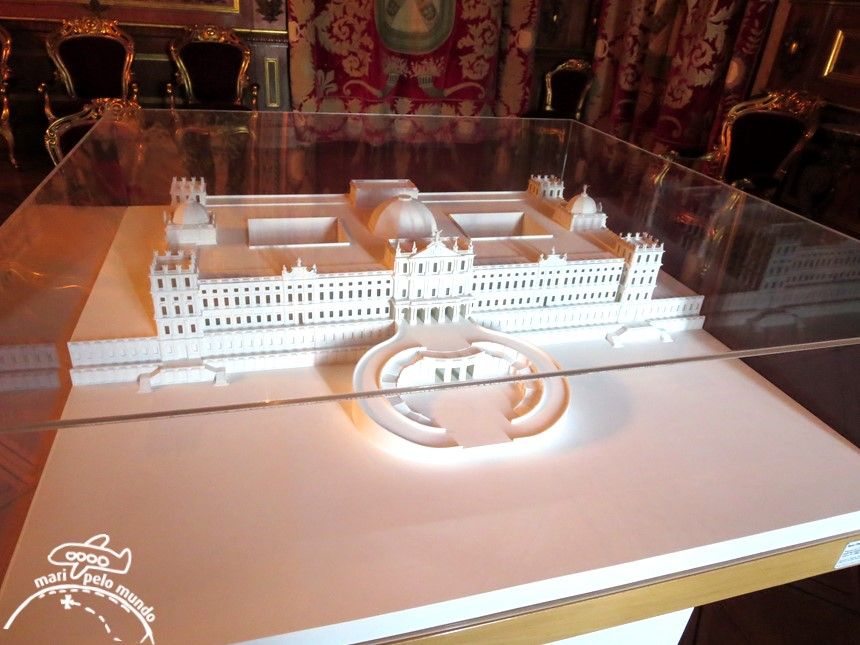
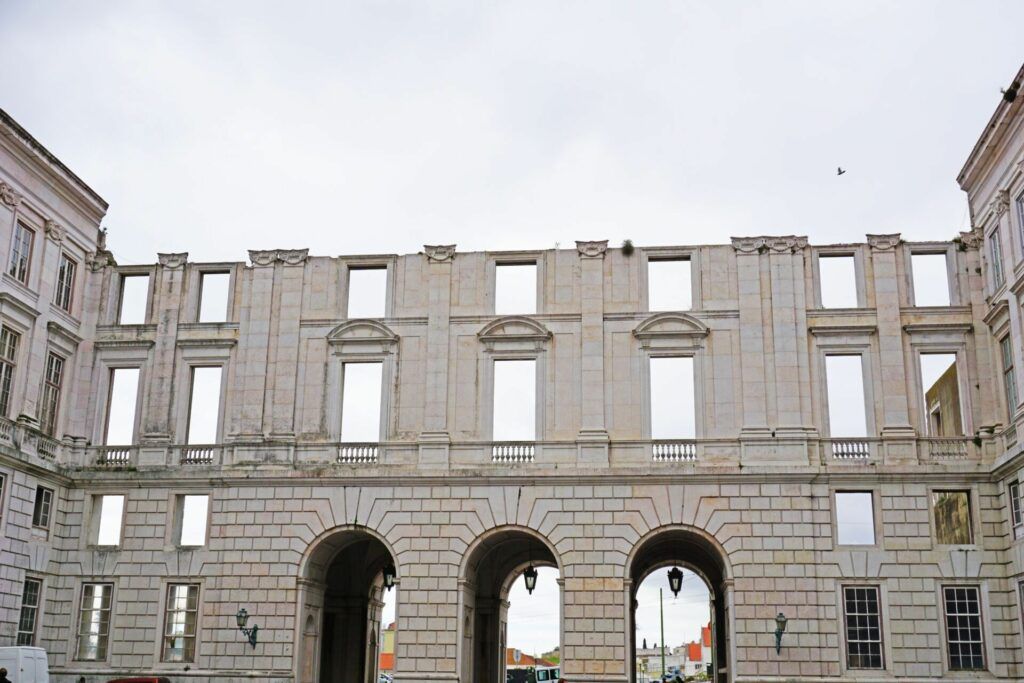
Top tip: Leave time to cross the street and visit the botanical gardens in Ajuda.
So that’s the unbelievable story of the Palácio Nacional da Ajuda. It’s unlikely that it’ll ever be finished due to lack of funds for such a huge project… but wouldn’t it be incredible if it were?
